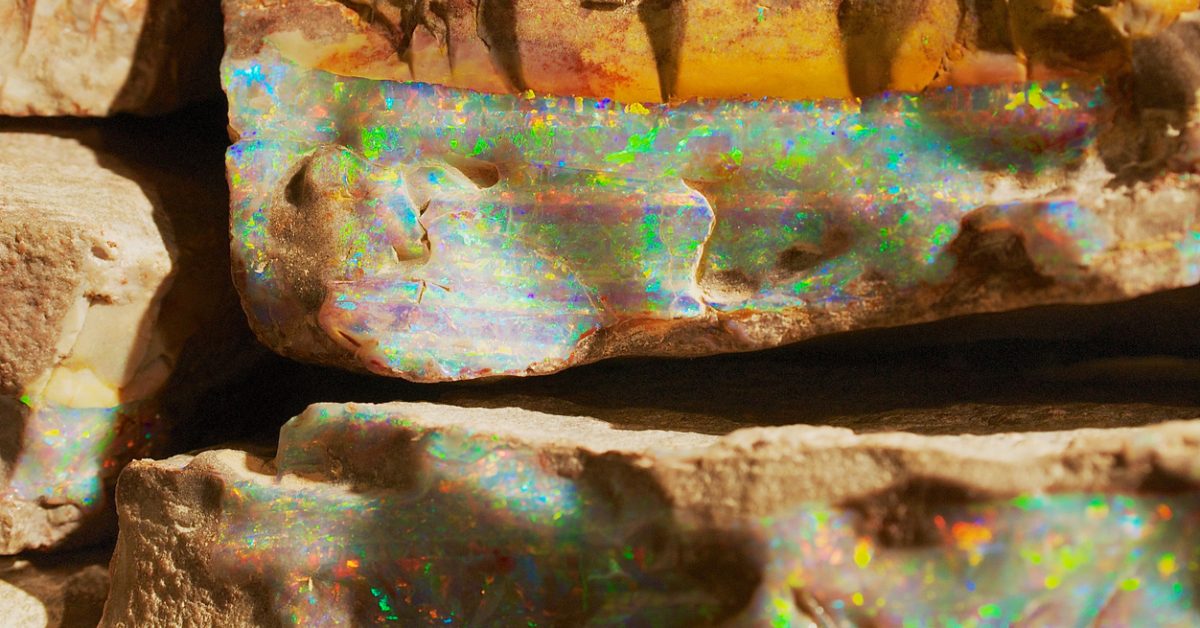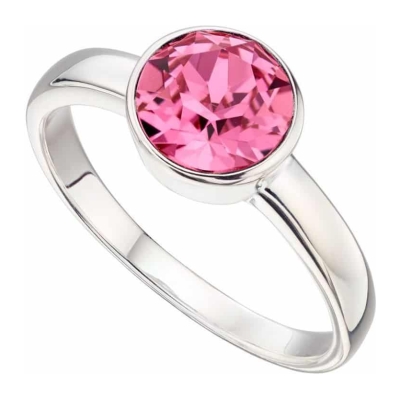Birthstones are associated with every month of the year, and Opal, the October birthstone, takes its name from “úpala”, a Sansrkit word that means “valuable stone”. It is an especially beautiful gem that is known sometimes as “the rainbow gemstone” since it occurs in all colours, from white and transparent to orange, pink, red, green, blue, and even black.
Unusual in appearance, and especially attractive, October Opal birthstone jewellery is particularly popular to give as a gift to anyone who celebrates their birthday during this autumn month thanks to its shimmery aesthetics and elegant look.
As Opal doesn’t have a crystal form, it’s classified as a “mineraloid”, and with a Mohs rating of 5 – 6.5, it is moderately hard. Several kinds of Opal have a molecular structure that diffracts the light, allowing the stone to appear to be many different colours at the same time, and that only adds to its unique brilliance. Although there are many shades of Opal, white stones are best-known since they are most commonly used in making jewellery.
Whether you’re considering giving a piece of Opal birthstone jewellery to a loved one, or whether you want to treat yourself to some Opal gold or silver jewellery as a special treat, you may want to know more about where these gemstones come from, how they are valued, and what their hidden meanings are. So, read on, and discover all you wanted to know about the October birthstone.
Where Does Opal Come From?
Although Opal is found in Mexico, Ethiopia, and some other countries around the world, Australia is said to have the very best Opals of all. The Australian Opal fields were discovered during the 19th century and remain one of the finest places to obtain the highest-quality Opal gemstones.
How Do I Choose The Best Opal Birthstone Jewellery?
Opals come in all colours and even in combinations of various colours, with each one differing considerably from the next. So, since they all look so different, they can’t be assessed in one single way. Experts evaluate Opals individually based on their type, clarity, colour, carat weight, and cut. They study these gems under different lights and against dark backgrounds to determine their quality.
Milky and white opals are most commonly used for making jewellery thanks to their appealing lustre, but Opals with a red hue are most exotic. The most valuable Opal is black in colour.
While Opals may be just one colour, they may also have a primary background colour alongside secondary additional colours. As an example, an Opal that is primarily white may also have flecks or shimmers in secondary colours against the milky background. A fire Opal, however, will be prized for its main colour’s uniformity which will range from orange to yellow without any shimmer or secondary colour.
Naturally, Opals come in different sizes, and while they are sometimes measured in terms of carats, they’re also sometimes measured in millimetres, with the most common sizes being 8 x 6mm, 7 x 5 mm and 6 x 4mm.
Clarity and transparency also vary between Opals. While white Opal is opaque, fire Opals may be translucent or transparent. Impurities may be trapped inside an Opal, but marks and inclusions shouldn’t be too obvious.
Most Opal jewellery will be oval cut as it maximises the rough stone, although white Opals will usually be polished into a cabochon to show off its shimmer. Generally, Opals remain untreated, but enhanced gems can often be found for sale. Black Opals are especially frequently treated with heat or smoke to enhance the black shade. It’s always best to buy untreated Opals.
Opal October Birthstone Legends And Meanings
Opals are surrounded by countless legends and myths. One of them is from the ancient Australian aboriginal people and relates to the universe’s creation. The tale talks of a deity who came down on a rainbow to Earth. As soon as he touched down onto the ground, the stones started shining in different colours, and thus Opal was created.
Ancient Romans believed that the Opal represented purity and hope, and believed the wearer could be kept safe from diseases. The Arabic people said that Opals fell down in flashes of lightning from heaven, and the ancient Greeks said that Opal could give them the ability to foresee the future.
During the centuries, the lore surrounding Opals has swung from positivity and good luck to negative connotations. However, its rich heritage has led to it becoming a popular choice of stone in both gold and silver jewellery today.
Symbolising truth, hope, and purity, Opal is not only the October birthstone, but also the gem associated with the 12th and 14th wedding anniversaries. In alternative medicine, it has been associated with improved eyesight, and it has even been said to help blonde women to maintain their hair colour!
Napoleon Bonaparte set Opals into his crown jewels, being the first ruler in Europe to do so. He also gifted the Empress Josephine, his wife, a stunning red Opal which was given the name “The Burning of Troy” due to its fiery sparkle.
Although Opals fell from favour during the 18th century, Queen Victoria restored their popularity and during her long reign, huge Opal fields were found in Australia, bringing Opals back into style. When Queen Elizabeth II went to Australia following her coronation in 1953, she was presented with a necklace containing a huge opal known as the “Andamooka Opal” from the famous South Australian Opal fields. With specks of blue, green, and red against its pale background, this oval Opal weighs 203 carats.
Giving Opal Birthstone Jewellery For An October Birthday
Finding the perfect gift for a loved one with an October birthday isn’t always easy, but a piece of Opal birthstone jewellery is sure to be an ideal choice. From stunning Pandora birthstone charms to beautiful Opal gold jewellery, there’s sure to be something in our spectacular collection that will delight any recipient on their special birthday.

